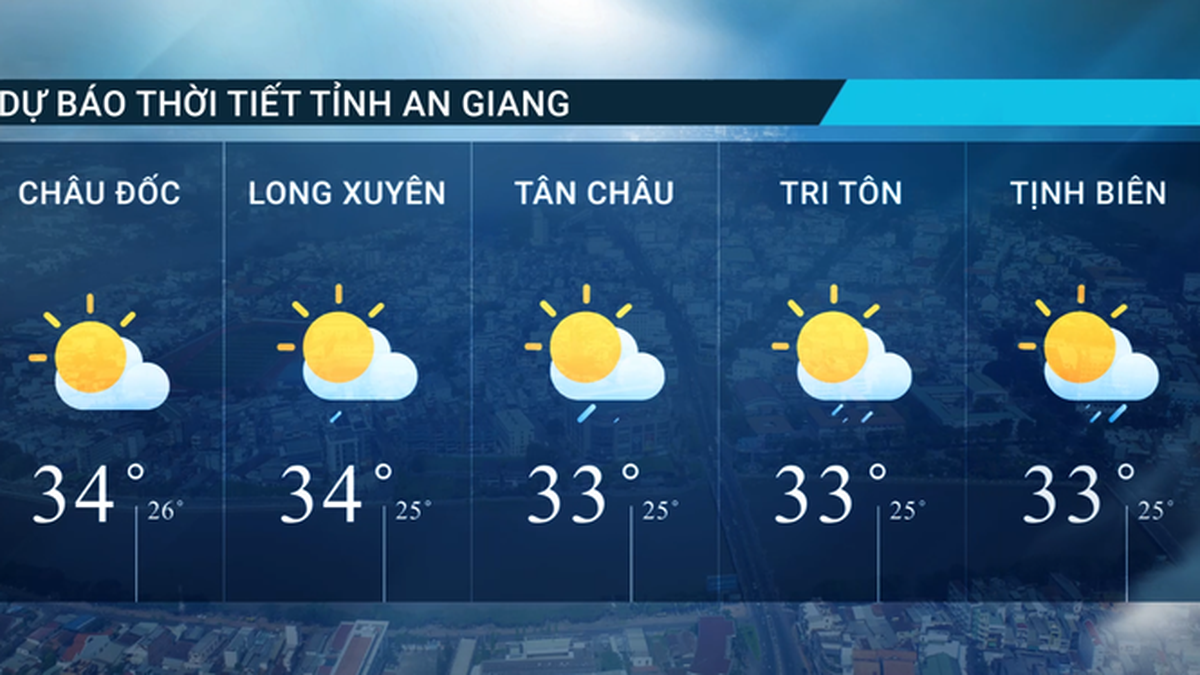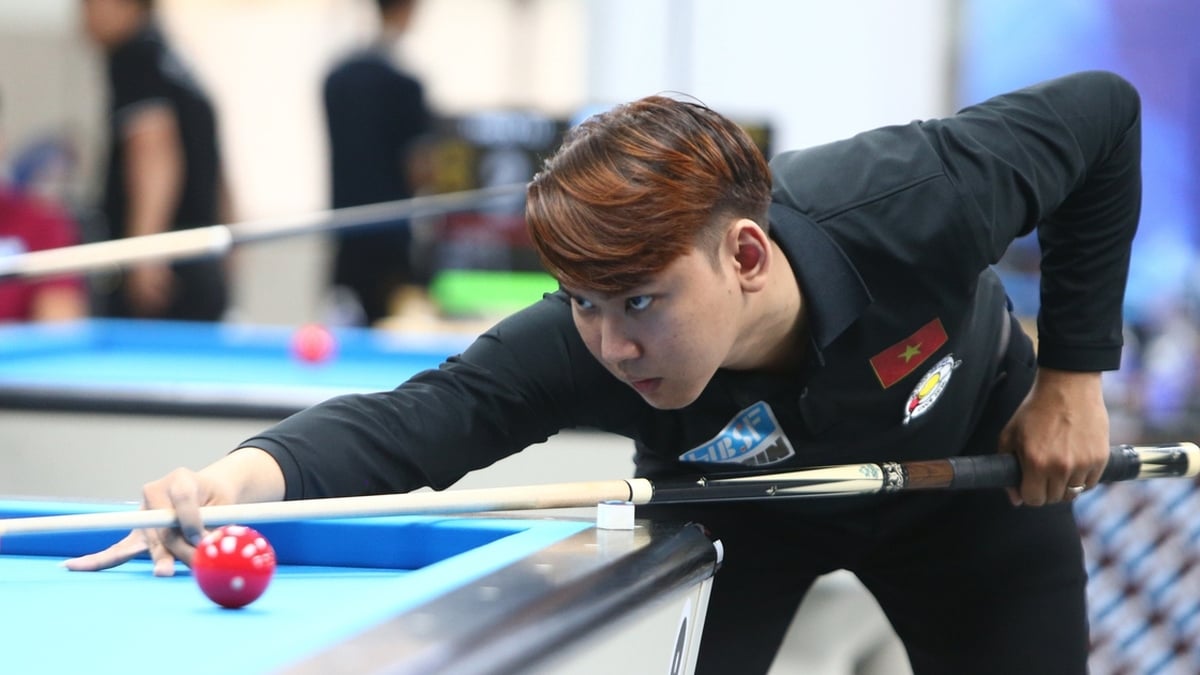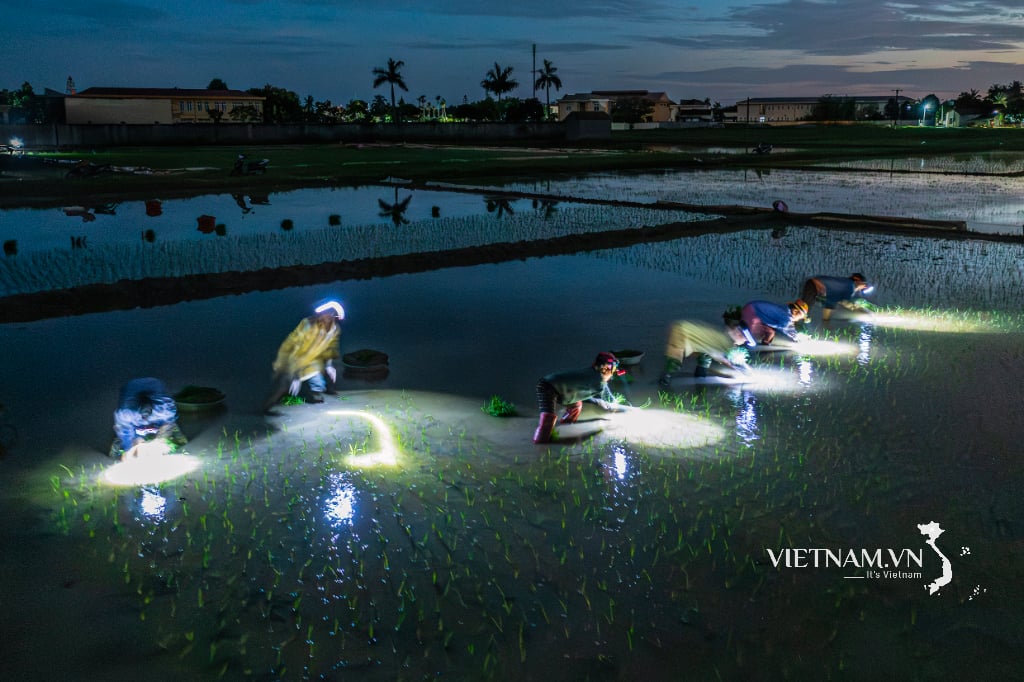Worship paintings were born from the gratitude of ethnic groups to the gods, who protected and sheltered them after the stormy migrations. In the northern mountainous provinces, worship paintings are present and play an important role in the spiritual life and beliefs of many ethnic groups such as Tay, Nung, Dao, Cao Lan, San Chay, San Chi... From the rituals of praying for crops, giving thanks, coming to the rank of high priest, Tet Nhay, to the customs of funerals, vegetarian ceremonies of families, clans... worship paintings are all hung in the most solemn position, as the presence and witness of the gods.
Ly Sinh Tinh, a resident of Yen Son village, one of three Dao villages in Ba Vi commune (Ba Vi district, Hanoi ), shared that after nearly seven years of separation from the ancestral temple, this year his family has just bought enough sets of worship paintings such as Tam Thanh, Hanh Su... to organize Tet Nhay - a special ceremony to commemorate ancestors. Worship paintings are an indispensable part of Tet Nhay ceremonies, because through them the gods will witness the family's sincerity. To have this set of worship paintings, he had to travel all the way to Tuyen Quang to have them painted, then ask a shaman to consecrate them.
The worship paintings of ethnic groups are very diverse, in addition to their spiritual meaning, they also help people to be good and express their aspirations in life. For example, the painting series "Ten Kings of Hell" of the Nung people has a strong educational meaning, emphasizing the law of cause and effect: Those who do evil will be sent to hell, thereby reminding people to strive for goodness. Meanwhile, the San Chay people express their wishes for good harvests through the painting series "Than Nong and Dia Trach", which often appear in rituals praying for a good harvest, hoping for a prosperous new year...
The unique style of painting worship paintings also contributes to the value of the heritage. With a realistic style, the artists paint according to the beliefs of the people and the community, not following the rules of painting. On the same canvas, one can see many gods, demons and even humans, depending on the imagination of the painter. Thanks to that, worship paintings become mysterious, different and an important and indispensable part of the religious life of the people.
“A few decades ago, ancient worship paintings were sold. There was an entire village in Thanh Oai (Hanoi) that specialized in going to the highlands to buy typical ethnic items, including worship paintings. Then, they brought them back to sell to antique shops. I remember a shop on Hang Bun Street, at its peak, they had about 2,000 ancient worship paintings. Now, in the villages, there are really not many ancient worship paintings left,” said Mr. Pham Duc Sy, a researcher and collector of ancient worship paintings.
As the “treasure” of the village, why is it so easy for ancient worship paintings to move from the village to the city? According to artist and cultural researcher Phan Cam Thuong, ancient worship paintings are mainly preserved by shamans and sorcerers, but after they pass away, there is no one to inherit the job. Their descendants also do not fully understand the value of the paintings, so they sell them. Some people prefer to use new paintings, because ancient paintings are easily damaged over time. Therefore, if someone buys ancient worship paintings at a high price, people are willing to sell them.
In the minds of ethnic minorities in the northern mountainous region, worship paintings are considered the connecting thread between humans and gods.
With limited awareness of the people, and the fact that ancient worship paintings are not taken seriously in many localities, in recent years, ancient worship paintings have been openly traded without a plan to protect this type of heritage. To better understand the story of the trade in worship paintings, we went to a shop specializing in selling ethnic goods on Hang Be Street (Hoan Kiem District, Hanoi City). As soon as we entered the shop, we saw sets of worship paintings displayed everywhere. When we knew that we intended to buy them to take abroad, the shop owner introduced them very professionally. The sets of worship paintings here are all from several decades to hundreds of years old and are mainly of ethnic groups such as Dao, Tay, Nung... The price of a set of seven paintings is about 19 million VND. As for individual paintings, it fluctuates around 2.9 million VND/sheet.
Seeing that we were still wondering whether buying ancient worship paintings violated the law; if we brought them abroad, would they be confiscated and kept by the authorities?... The shop owner affirmed: "I have been selling worship paintings for many years, mostly for tourists to take abroad. So rest assured that this type of painting can be bought and sold freely, and is not prohibited."
If placed in the right place in the rituals of the highlanders, these are paintings that convey the faith of the whole community. In shops, they are simply unique, strange and somewhat mysterious paintings in the eyes of tourists. Dr. Tran Huu Son, Director of the Institute of Applied Folk Culture Research, recalls that in the past, when I was the Director of the Department of Culture, Sports and Tourism of Lao Cai province, to protect the ancient worship paintings, I had to stamp them with the “Intangible Cultural Heritage” stamp, so foreign visitors or art dealers could not buy them. Only by doing so can the ancient worship paintings, hundreds of years old, be kept in the village.
As a researcher who has spent many years working on preserving the culture of ethnic minorities, during his field trips, Dr. Tran Huu Son once witnessed a Dao community that had not kept worship paintings for 60 years. All of their rituals had no paintings. Such a decline in identity made him worry: “There needs to be a mechanism to clearly distinguish between ancient worship paintings that need to be protected and newly created paintings that can be bought and sold. Clarifying this boundary will help protect ancient worship paintings from rampant trading.”
For generations, worship paintings have been a bridge between people and gods, carrying the belief in good things. For that belief to last forever, worship paintings must live in the cultural space of the village and be preserved by the people, the people who practice the belief. In addition to raising awareness among the people, there needs to be a coordinated participation of all levels and sectors, so that worship paintings can be revived.
Source: https://nhandan.vn/khong-giant-cho-tranh-tho-cua-dong-bao-vung-cao-post881211.html
































































































Comment (0)